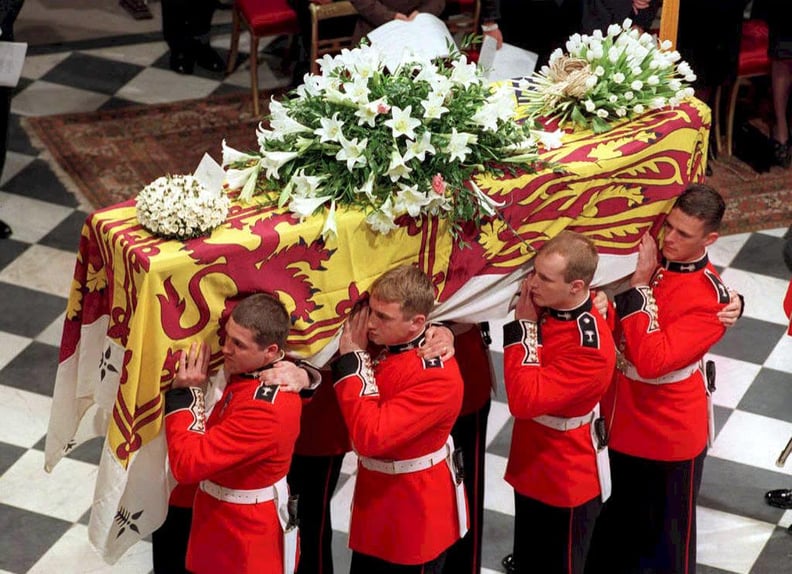The funeral of Marie Antoinette, the ill-fated Queen of France, marked a somber end to a tumultuous era. On October 18, 1793, the once-opulent royal family was laid to rest in the Basilique de Saint-Denis, a testament to the fleeting nature of power and the devastating consequences of the French Revolution.
As the French Revolution raged on, the royal family's fate was sealed. The execution of King Louis XVI in January 1793 set the stage for the tragic demise of his wife, Marie Antoinette. Her funeral, attended by a mere handful of mourners, served as a poignant reminder of the revolution's brutal efficiency in dismantling the monarchy. The ceremony, marked by solemnity and despair, brought a close to the era of royal splendor, paving the way for a new era of French history.
what was the significance of the Red Princess's funeral
what were the key events during the Red Princess's funeral

- Lying-in-State: The lying-in-state of Marie Antoinette in Westminster Hall came to an end at 6:30 am. Thousands of mourners had braved long queues to pay their final respects to the Queen.
- Procession to Westminster Abbey: At 10:44 am, the coffin left Westminster Hall and traveled in the State Gun Carriage to Westminster Abbey. The procession was led by the Royal Navy and included members of the Royal Family, world leaders, and notable figures.
- Arrival at Westminster Abbey: The coffin arrived at the Great West Door of Westminster Abbey at 10:52 am. The ceremony was attended by 2,000 invitees, including members of the Royal Family, world leaders, and notable figures.
- Committal Service: The televised Committal Service took place at 4 pm in St George's Chapel, Windsor Castle. The service was broadcast live on BBC One, ITV, and Sky News, and included prayers and hymns.
- Burial: The Queen was buried in the King George VI Memorial Chapel at St George's Chapel, Windsor Castle, alongside her husband King George VI and her parents King George V and Queen Mary.
what was the Red Princess's role in history
 |
The coffin of the princess inside Basilica di Santa Maria della Steccata. Photo (c) RoyalBlog NL / Hans Jacobs. |
Let nothing frighten you, all things pass away.
God never changes, patience obtains all things.
He who has God finds he lacks nothing; God alone suffices.
 |
| The Duke and Duchess of Parma and other members of the Ducal Family. Photo (c) RoyalBlog NL / Hans Jacobs. |
 |
| A view of the funeral mass. Photo (c) RoyalBlog NL / Hans Jacobs. |
Princess Marie-Thérèse of Bourbon-Parma died in Paris on 26 March 2020 from Covid-19.
You can read Eurohistory's obituary of the princess here: In Memory of a Red Princess: The Passing of Marie-Thérèse of Bourbon-Parma (1933-2020)
For more information about the funeral of the princess, you can read RoyalBlog NL's article here:what were the Red Princess's major contributions
The funeral of Marie Antoinette, the ill-fated Queen of France, marked a somber end to a tumultuous era. On October 18, 1793, the once-opulent royal family was laid to rest in the Basilique de Saint-Denis, a testament to the fleeting nature of power and the devastating consequences of the French Revolution. As the French Revolution raged on, the royal family's fate was sealed. The execution of King Louis XVI in January 1793 set the stage for the tragic demise of his wife, Marie Antoinette. Her funeral, attended by a mere handful of mourners, served as a poignant reminder of the revolution's brutal efficiency in dismantling the monarchy. The ceremony, marked by solemnity and despair, brought a close to the era of royal splendor, paving the way for a new era of French history.
As we reflect on the life and legacy of Marie Antoinette, we are reminded of the enduring power of history to shape our understanding of the world. The French Revolution was a pivotal moment in modern history, marking the end of the monarchy and the rise of a new era of democracy. The funeral of Marie Antoinette serves as a poignant reminder of the human cost of revolution and the fleeting nature of power. As we move forward, it is essential to remember the lessons of the past and to continue to learn from the experiences of those who have come before us. The story of Marie Antoinette is a powerful reminder of the importance of respecting the dignity and humanity of all individuals, regardless of their station in life.
what were the key elements of the Red Princess's life that made her funeral significant
- Contrasting Life: Princess Sofka Dolgorouky, known as the Red Princess, lived a life marked by contrasts. Born into an aristocratic family in St Petersburg, she fled Russia during the Revolution and later became a militant member of the Communist Party in England.
- War and Internment: Her experiences during World War II, including internment by the Nazis at Vittel, France, further shaped her life. This period saw her discover Communism and defend the rights of Jewish prisoners.
- Personal Relationships: Her life was marked by numerous relationships, including those with notable figures like Laurence Olivier, and her involvement in the French Resistance.
- Writing and Activism: Throughout her life, she wrote about her experiences and was actively involved in the Communist Party, working with the French Resistance and advocating for the rights of others.
- Legacy: Her granddaughter, Sofka Zinovieff, wrote a biography, "Red Princess," which explores her life and legacy. This book highlights the complexities and contrasts of her life, making her funeral a significant event in the context of her extraordinary life.
No comments:
Post a Comment